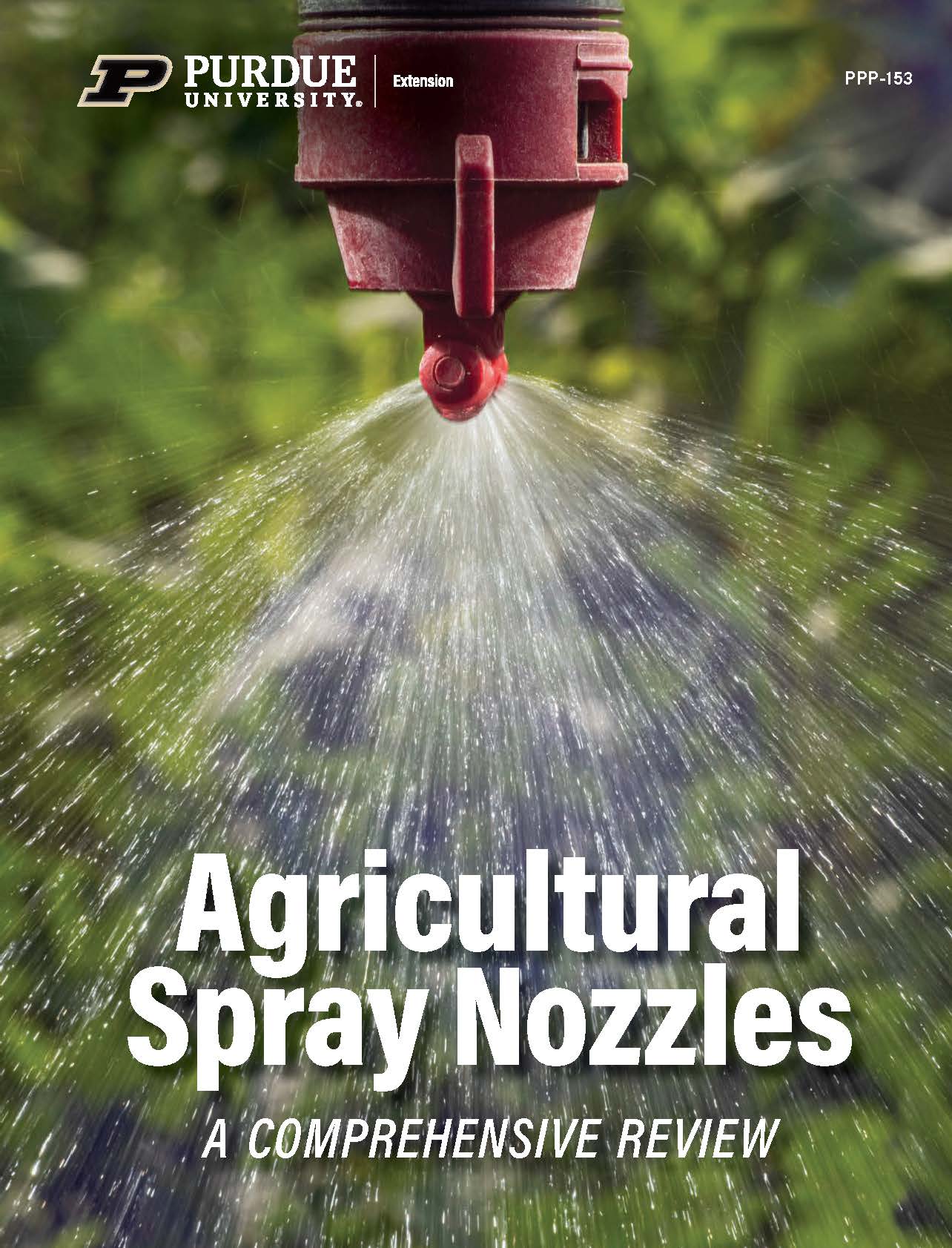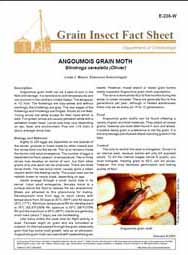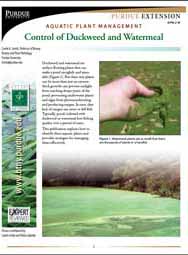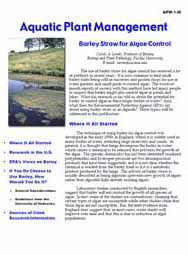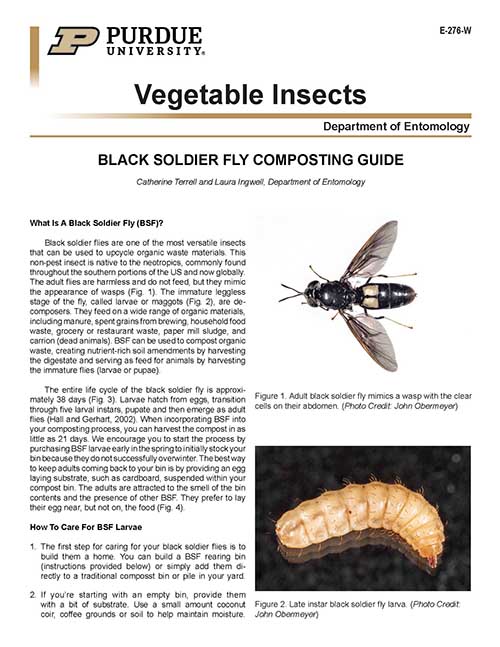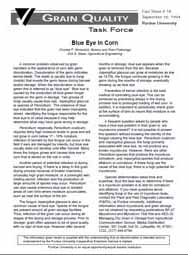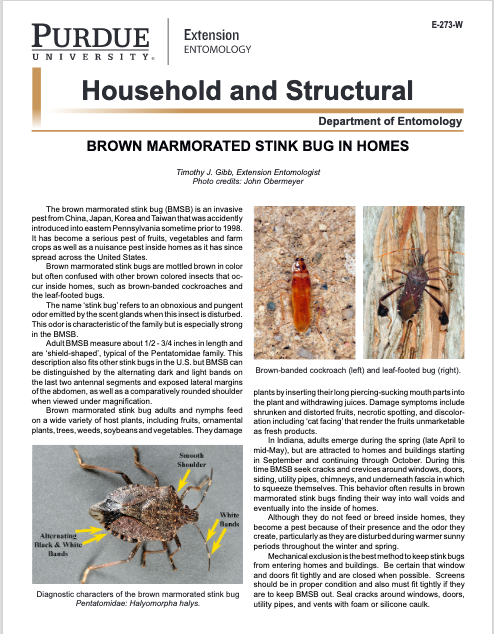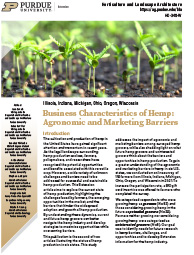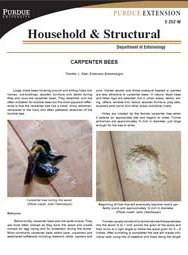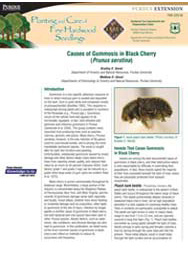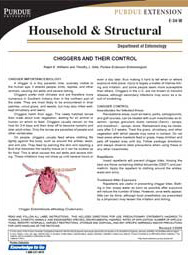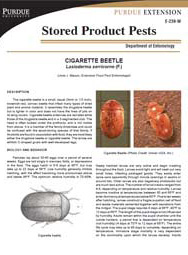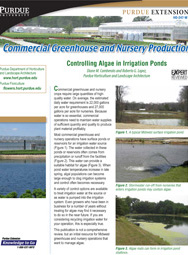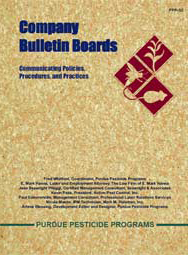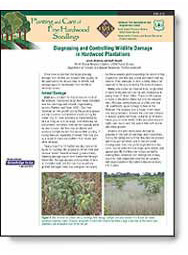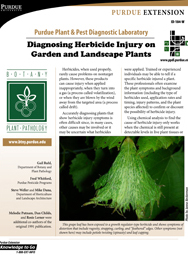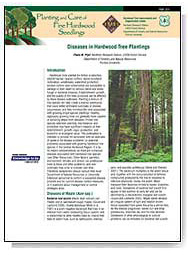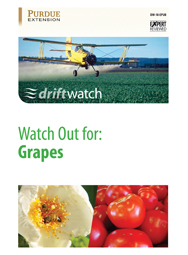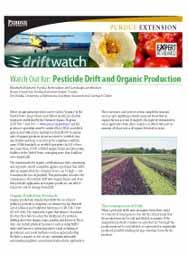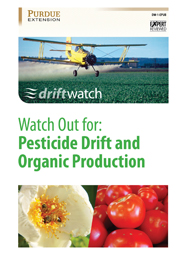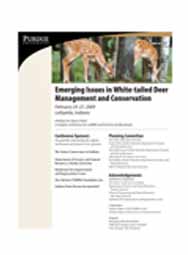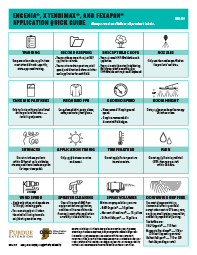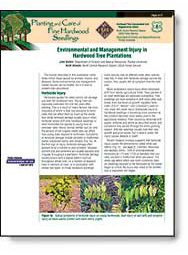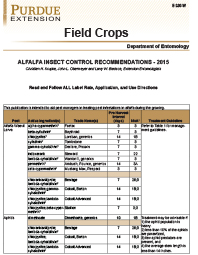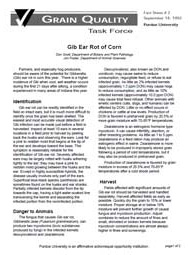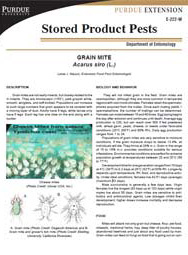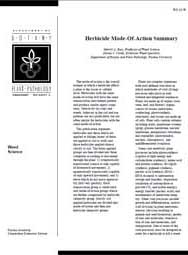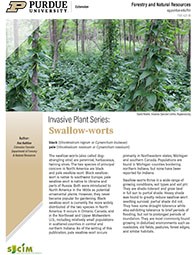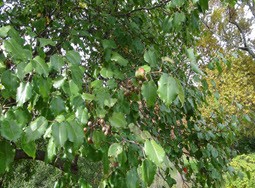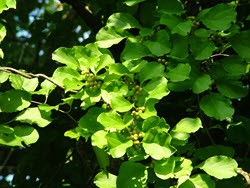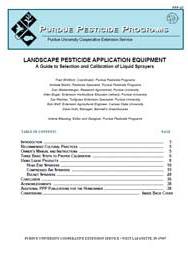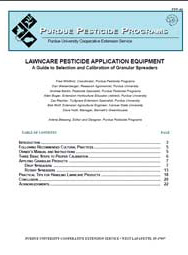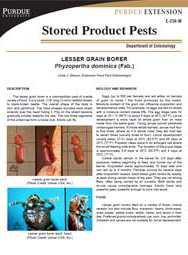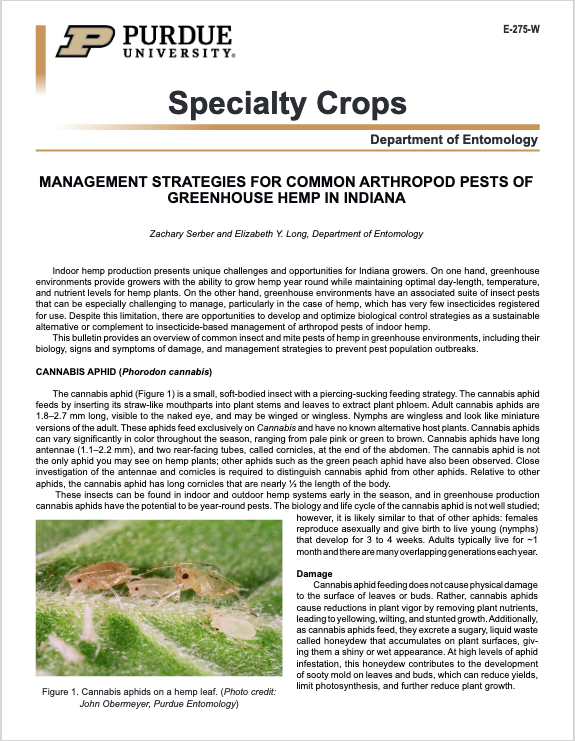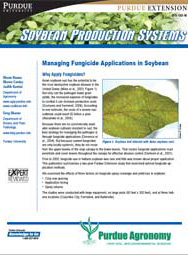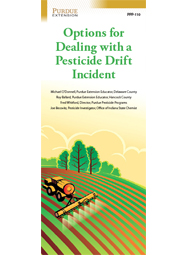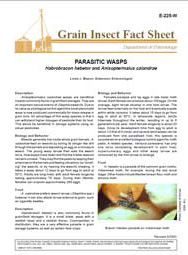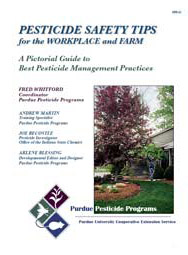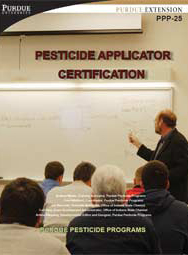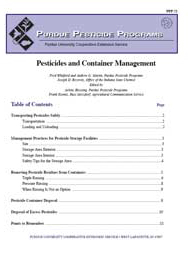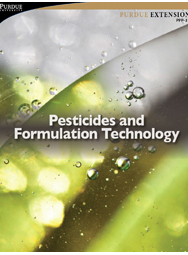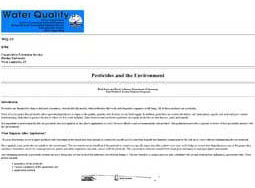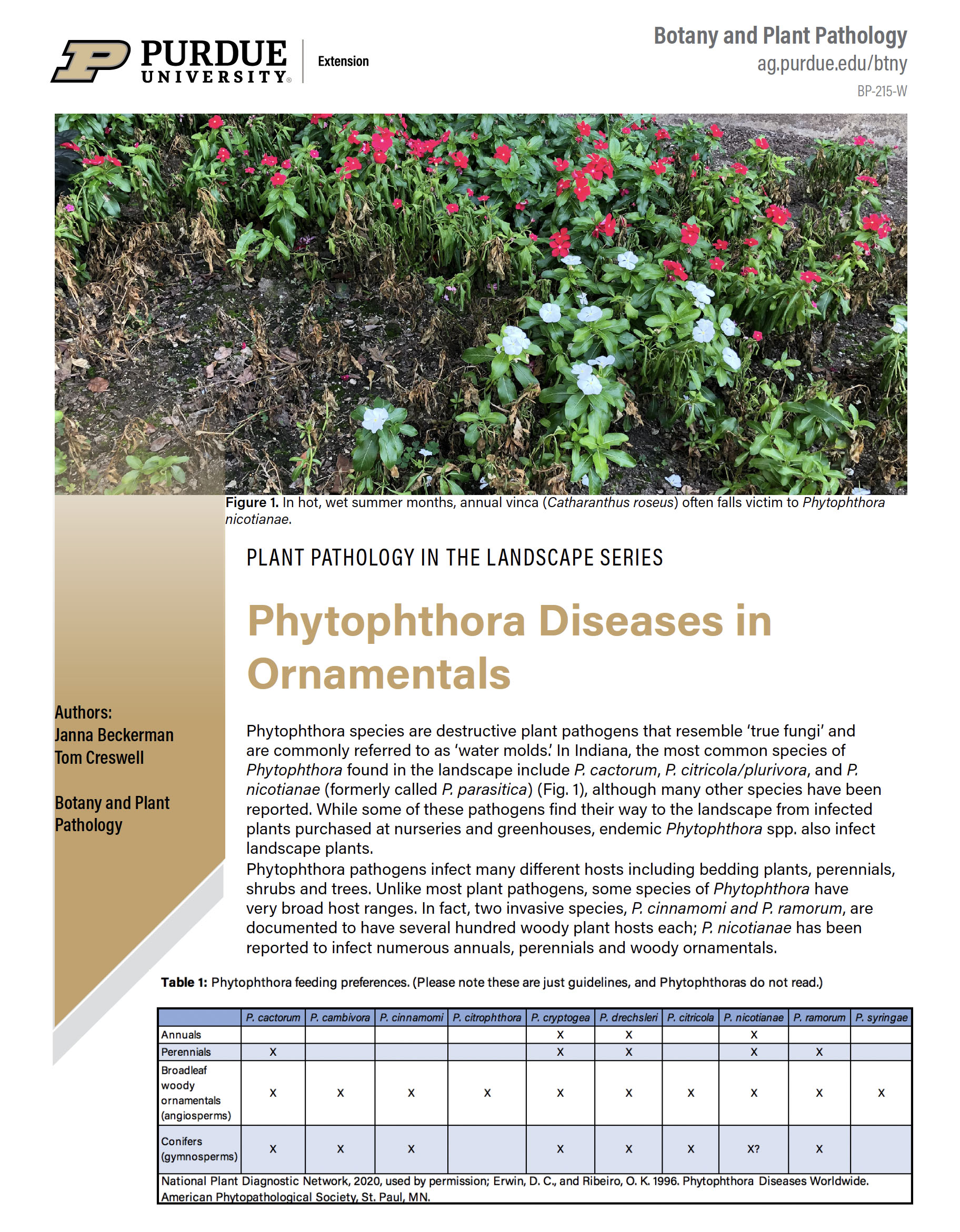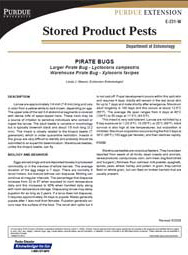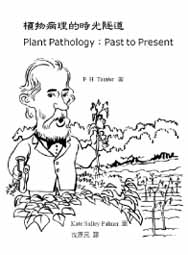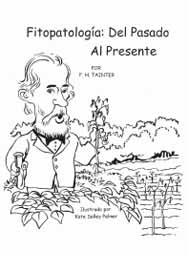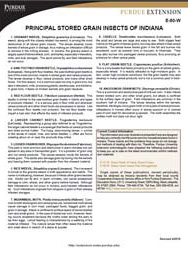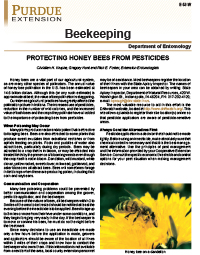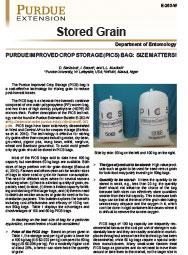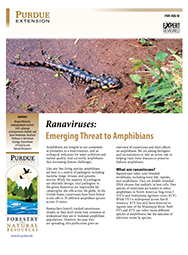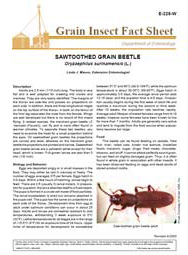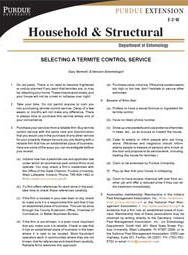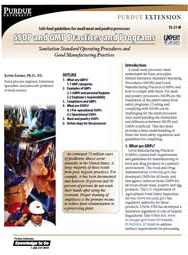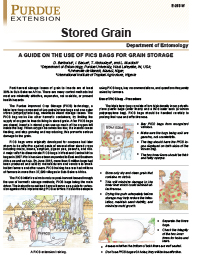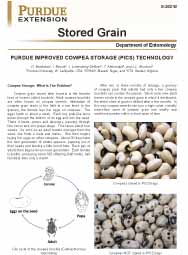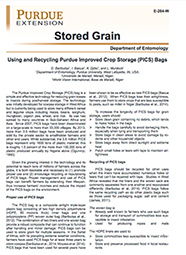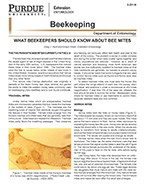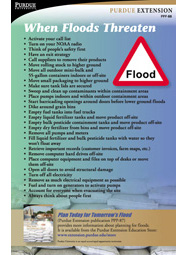Pest Management
Other Pest Management
You are sorting the results by showing only those that are free. (Clear)
Agricultural Spray Nozzles: A Comprehensive Review
As we explore and implement these new technologies, it is important not to overlook advances in hydraulic nozzle technology and to acknowledge the critical role they play in the application process. In general, a nozzle ...
Angoumois grain moth can be a pest of corn in the field and storage. This publication describes this pest and recommends methods for controlling it.
Format: PDF.
Pages: 2.
This publication addresses the benefits of having aquatic vegetation and problems it can cause. The publication also includes an aquatic plant identification guide with color photos along with methods to control aquatic ...
Aquatic Plant Management: Control of Duckweed and Watermeal
Duckweed and watermeal are surface-floating plants that can make a pond unsightly and unusable, and can indirectly harm fish. This publication explains how to identify these aquatic plants and provides strategies for man...
Aquatic Plant Management: Identifying and Managing Aquatic Vegetation
Vegetation is an important part of any aquatic system, but sometimes, aquatic plants can get out of control and create problems. This publication explains the benefits of aquatic vegetation, describes the problems posed ...
Barley Straw for Algae Control
The use of barley straw for algae control has received a lot of publicity in recent years. It is now common to find small barley bales being sold in nurseries and garden shops for use in water gardens and small pools to ...
Black Soldier Fly Composting Guide
This project is a guide to integrating Black Soldier Flies into a composting process. The goal of increasing organic matter recycling, generating soil amendments, and protein for small livestock. Impact: reduce input cos...
This one-page publication entitled, "Blue Eye in Corn" discusses a type of germ discoloration. Blue eye in corn is usually due to fungi in the germ tissue. Occuring during harvest, blue eye indicates that grain has be...
Brown Marmorated Stink Bug In Homes
The brown marmorated stink bug (BMSB) is an invasive pest from China, Japan, Korea and Taiwan that was accidently introduced into eastern Pennsylvania sometime prior to 1998. It has become a serious pest of fruits, veget...
Business Characteristics of Hemp: Agronomic and Marketing Barriers
Navigating the hemp industry, even as production in the U.S. is increasing, can be complicated. This Extension publication by Purdue University researchers highlights the challenges and barriers that hemp growers in five...
Large black bees hovering around and drilling holes into homes, out-buildings, wooden furniture and decks during May and June are carpenter bees. They resemble, and are often mistaken for bumble bees but the most apparen...
This publication provides a description of the cigarette beetle. In addition, facts are provided about the biology, behavior and food preferences....
Commercial Greenhouse and Nursery Production: Controlling Algae in Irrigation Ponds
Because water is so essential, commercial greenhouse and nursery operations need to maintain water supplies of sufficient quantity and quality to produce plant material profitably. This publication is not a comprehensive...
Company Bulletin Boards Communicating Policies, Procedures, and Practices
The employee bulletin board should be an official site where the employer communicates policies and procedures to employees. Maintenance of bulletin boards tends to become a "back burner" item when seemingly more impor...
Diagnosing and Controlling Wildlife Damage
Once trees are planted and begin growing, damage from wildlife can threaten their quality. In this 8-page publication (PDF) we discuss how to identify and minimize loss and manage injury caused by wildlife to hardwoods. ...
Diagnosing Herbicide Injury on Garden Landscape Plants
Herbicides, when used properly, rarely cause problems on nontarget plants, but they can sometimes injure other plants. This publication examines the common causes of herbicide injury and how to avoid them....
Disease Management Strategies for Horticultural Crops: Using Organic Fungicides
When confronted with a disease, many say they prefer to use organic products because they are more environmentally friendly. Others say they just want to use a product that works, regardless of the ecological impact. Man...
Diseases in Hardwood Tree Plantings
This publication provides the landowners with an overview of some of the disease problems (or potential problems) associated with growing hardwood tree species in the Central Hardwood Region....
Driftwatch: Watch Out for Grapes
Pesticide drift can severely damage non-target crops. This Driftwatch publication addresses drift in grapes. It examines products of special concern, injury symptoms and potential impact, and alternatives and ways to avo...
Driftwatch: Watch Out for Grapes
Pesticide drift can severely damage non-target crops. This Driftwatch publication addresses drift in grapes. It examines products of special concern, injury symptoms and potential impact, and alternatives and ways to avo...
Driftwatch: Watch Out for Pesticide Drift and Organic Production
The requirements for organic certification are time-consuming and expensive. And if a neighbor applies a pesticide that drifts onto an organic field, the economic losses can be high. This publication describes the conseq...
Driftwatch: Watch Out for Pesticide Drift and Organic Production
The requirements for organic certification are time-consuming and expensive. And if a neighbor applies a pesticide that drifts onto an organic field, the economic losses can be high. This publication describes the conseq...
Emerging Issues in White-tailed Deer Management and Conservation
White-tailed Deer have the ability to change the structure and composition of forests throughout their range. This coupled with their proliferation have led some to term the whitetail an ecological keystone species. Howe...
Engenia, Xtendimax, And FeXapaŽ Application Quick Guide and Required Records for Applications
One side of this handout provides a quick guide for applying Engenia, Xtendimax, and FeXapan products to dicamba-resistant crops. The other side is a required record-keeping form for making those applications. The pri...
Environmental and Management Injury in Hardwood Tree Plantations
Herbicides applied for weed control can damage and even kill hardwood trees. This publication discusses recovery of loss from herbicide injury, soil compaction, frost damage, frost cracks, dieback, sunscald, ice, salt, f...
Field Crops: Alfalfa Insect Control Recommendations
This publication is an aid for pest managers in treating insect pest infestations in alfalfa during the growing season.
Format: PDF.
Pages: 6.
Language:...
Forest Pest Control Perspective
This publication discusses pest control in forests and management of forest pests. Pesticides, herbicides, insecticides, rodenticides and fungicides are discussed. ...
This grain quality fact sheet has information about identifying Gib ear rot, its danger to animals, and its effects on harvest and storage....
This publication provides a description of grain mites. In addition, facts are provided about the biology, behavior, food preferences and control methods for grain mites....
Grain Mite Infestation: Prevention and Control
This grain quality fact sheet has information about infestation, prevention, and control of moderate infestation of grain mites....
This publication provides a description of the hairy fungus beetle, a pest of grain that feeds on mold. In addition, facts are provided about the biology, behavior and food preferences of the beetle....
This publication provides a description of the Indianmeal moth. In addition, facts are provided about the biology, behavior and food preferences of the Indianmeal moth....
Invasive Plant Series - Tree of Heaven, Ailanthus altissima
Tree-of-heaven is a serious threat as an invasive species in many habitats or untended areas. It can reach 80 feet or more, its growth rate outpaces most native tree species, and wind scatters seeds that female trees pro...
Invasive Plant Series: Swallow-worts
Black and pale Swallow-wort are non-native perennial, herbaceous, twining vines. Not yet well established in Indiana, the vines are highly invasive and grow rapidly, quickly twining around, climbing and overwhelming neig...
Invasive Plant Species: Callery Pear
Invasive plant species can damage woodlands and wildlife habitat areas. This video will familiarize you with Callery pear, an exotic invasive tree that is moving from ornamental plantings to fields and woodlands. Learn h...
Invasive Plant Species: Oriental Bittersweet
Invasive plant species can damage woodlands and wildlife habitat areas. This video will familiarize you with Oriental bittersweet, an exotic invasive vine that is moving from ornamental plantings to fields and woodlands....
Invasive Plant Species: Wintercreeper
Invasive plant species can damage woodlands and wildlife habitat areas. This video will familiarize you with wintercreeper, an exotic invasive vine that is moving from ornamental plantings to fields and woodlands. Learn ...
Laminitis Caused by Black Walnut Wood Residues
Very small quantities of black walnut residue in horse bedding can result in laminitis. This publication discusses a growing problem in using horse bedding containing black walnut chips and strands....
Landscape Pesticide Application Equipment: A Guide to Selection and Calibration of Liquid Sprayers
Homeowners strive for beautiful and productive lawns, and sometimes, despite using good cultural practices, pests get the upper hand. When using pesticides to control pests it's important to follow procedures and know ho...
Lawncare Pesticide Application Equipment: A Guide to Selection and Calibration of Granular Spreaders
Not calibrating lawn application equipment is like placing a meal in an oven and setting the temperature randomly. If the over is too high, the food is overcooked; too low, and it undercooked. This publication describe...
The lesser grain borer is a pest that feeds on a variety of food. This publication provides a description and discusses its biology and behavior and the types of food it feeds on....
Management Strategies For Common Arthropod Pests of Greenhouse Hemp In Indiana
Indoor hemp production presents unique challenges and opportunities for Indiana growers. On one hand, greenhouse environments provide growers with the ability to grow hemp year round while maintaining optimal day-length,...
Mint Production and Pest Management in Indiana
This publication provides information about producing mint. Included is information about planting and maintenance, irrigation, harvesting and oil distillation. Pest maintenance is also discussed for weeds, diseases and ...
Options for Dealing with a Pesticide Drift Incident
When any pesticide moves through the air away from the target site and onto someone else's property – known as pesticide drift – the pesticide can damage non-target crops, landscape plants, and gardens. Th...
This publication provides a description of parasitic wasps. Parasitic wasps are beneficial insects commonly found in grain/food storages. The publication provides facts about the biology, behavior and food preferences of...
Now that most states allow hemp to be grown, and more uses for hemp fiber are found, an increase in production may be ahead. Growers and policymakers will benefit from this publication, by a team of Purdue University res...
Pesticide Safety Tips for the Workplace and Farm
This pictorial guide to best pesticide management practices provides information on how to safely handle and store pesticides at the workplace or farm. It is important to follow the label instructions for handling and st...
Pesticides and Applicator Certification
This publication discusses certification requirements and programs for individuals who will be using restricted-use pesticides or applying general-use products in commercial situations....
Pesticides and Container Management
Proper management of pesticide containers generally is a straightforward procedure, but it requires careful thought and a proper attitude. Appropriate transportation and storage of pesticides help protect the environment...
Pesticides and Formulation Technology
This publication explains the benefits and problems associated with the various pesticide formulations. It also can be used to construct a planning or decision-making model for the proper selection of a formulation in a...
Pesticides and the Environment
This publication discusses what happens after application, pesticide properties, the application site, and putting it all together: the role of the applicator....
Phytophthora Diseases in Ornamentals
Phytophthora diseases are among the most serious problems of ornamental plants in nurseries, greenhouses and in the landscape. These 'water mold' pathogens affect hundreds of types of plants, including annuals, perennial...
This fact sheet provides information about pirate bugs. The sheet includes information on the biology, behavior and food preferences of these bugs....
Plant Pathology: Past to Present coloring book
This coloring book is aimed at K-12 students, as well as adults and master Gardeners interested in learning more about plant diseases. A companion,
Plant Pathology: Past to Present coloring book (Chinese version)
This Chinese language coloring book is aimed at K-12 students, as well as adults and master Gardeners interested in learning more about plant diseases. A companion, A Story of Plant Pathology: Past to Present
Plant Pathology: Past to Present coloring book (Spanish version)
This Spanish language coloring book is aimed at K-12 students, as well as adults and master Gardeners interested in learning more about plant diseases. A companion, A Story of Plant Pathology: Past to Present
Precautions for Using Dicamba Herbicides in Xtend® Soybeans
This publication describes some of the issues associated with dicamba applications and how growers can manage them.
Format: PDF
Pages: 4
Language: ...
Principal Stored Grain Insects of Indiana
Gives picture and general description of ten common stored grain insect pests of Indiana. ...
Dado que el agua es un elemento esencial, invernaderos comerciales y operaciones de viveros necesitan mantener el abastecimiento de agua en cantidad y calidad suficiente para producir plantas de manera rentable. Esta pub...
Protecting Honey Bees from Pesticides
Honey bees are a vital part of our agricultural system, as are many other species of pollinators. But pesticide misuse can threaten these important resources. This publication discusses alternatives to pesticides to prot...
Purdue Improved Crop Storage (PICS) Bag: Size Matters!
The Purdue Improved Crop Storage (PICS) bag is a cost-effective technology for storing grain to reduce post-harvest losses. Most of the PICS bags sold to date have 100 kg capacity but sometimes the 50 kg bags are availab...
Ranavirus: Emerging Threat to Amphibians
Amphibians are integral to our ecosystem as predators, as a food resource, and as ecological indicators for water pollution and habitat quality. And currently, amphibians face increasing disease challenges, especially f...
Rusty, Flat, and Flour Mill Beetles
This publication provides a description of rusty, flat and flour mill beetles. In addition, facts are provided about the biology, behavior and food preferences of the beetle....
This is a fact sheet that provides information about sawtoothed grain beetles. The sheet includes information on the biology, behavior and food preferences of the beetle....
Small Meat Processing Plants: A Pest Control Program
Basic pest control in the food processing plant is an essential prerequisite food safety program. Unfortunately, many processors have never estalished a systematic, organized approach toward a pest control program. Thi...
Stored Grain: A Guide on the Use of PICS Bags for Grain Storage
Post-harvest storage losses of grain to insects are at least 30 percent in Sub-Saharan Africa. There are many control methods but most are minimally effective, expensive, not scalable, or present health hazards. The Purd...
Stored Grain: Purdue Improved Cowpea Storage (PICS) Technology
Cowpea grain stored after harvest is the favorite food of insects called bruchids. Adult cowpea bruchids are often known as cowpea weevils. Infestation of cowpea grain starts in the field at a low level.
Forma...
Stored Grain: Using and Recycling Purdue Improved Crop Storage (PICS) Bags
Purdue Improved Crop Storage (PICS) bags have been disseminated on a large-scale throughout West Africa. The bags represent 1,600 tons of plastic material. This publication examines how to properly use and recycle the PI...
Terminating Cover Crops: Successful Annual Ryegrass Termination with Herbicides
Annual ryegrass has become a popular cover crop choice for growers in Indiana and many other states. Unfortunately, its adaptability, quick establishment, and aggressive growth are also considered to be characteristics o...
Terminating Cover Crops: Successful Cover Crop Termination with Herbicides
Many cover crop species have characteristics that make them both desirable as cover crops and troublesome weed species. Weedy cover crop escapes not only affect the current production crop, but also can produce seeds and...
What Beekeepers Should Know About Bee Mites
Varroa mites (Varroa destructor) can be seen on the surface of both adult and immature honey bees, and they can move about quickly. The adult female Varroa mite is a shiny, reddish-brown, shield-shaped object about 1....
This handy chart provides a quick list of steps agricultural retailers should take when floods threaten their facilities. It is a companion piece to Purdue Extension publication PPP-87, Plan Today For Tomorrow's Flood: A...









